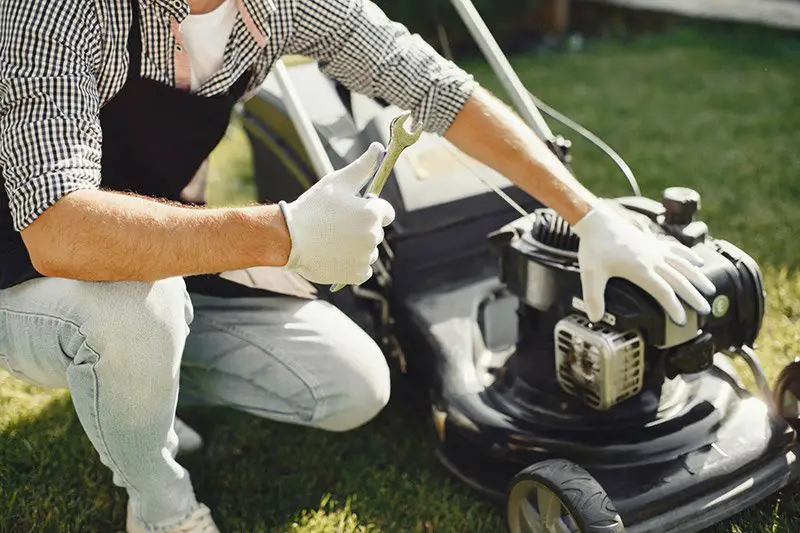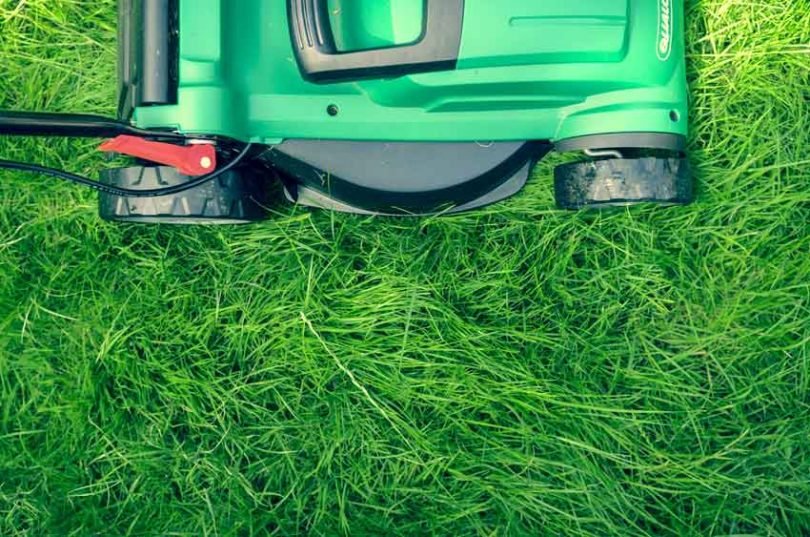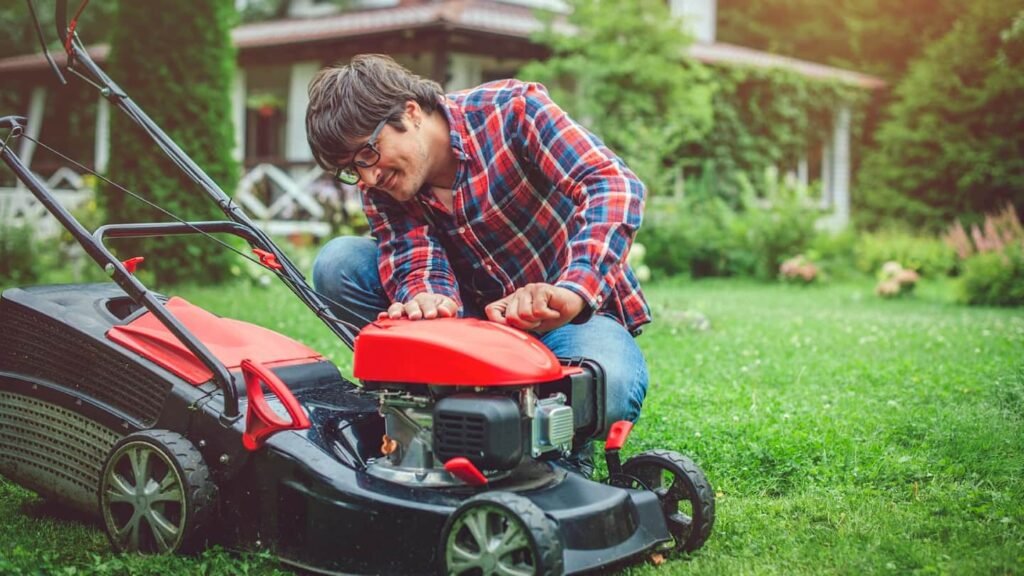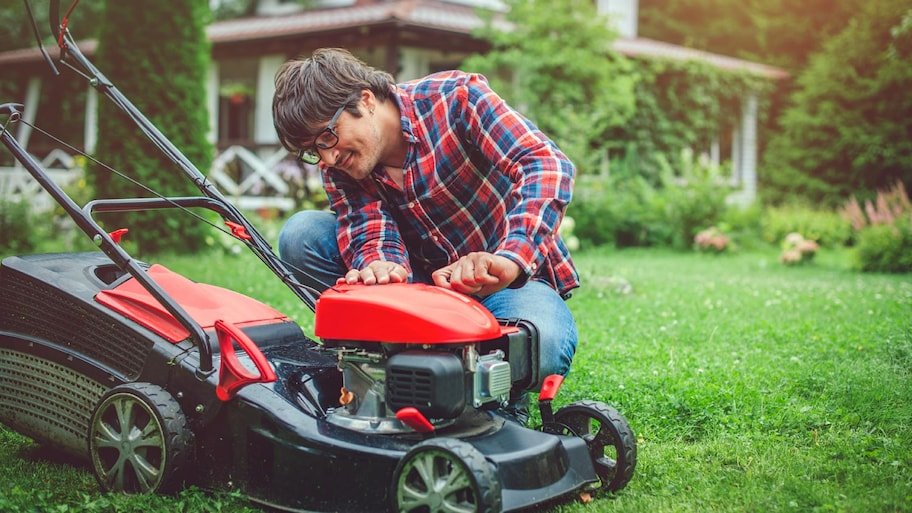Maintaining your lawn mower is essential to keep it running smoothly and ensure a pristine lawn all year round. In this comprehensive guide, we will walk you through the different aspects of lawn mower maintenance, including how often you should perform it. From changing the oil and spark plug to cleaning the blades and air filter, we’ll cover everything you need to know to keep your lawn mower in top-notch condition. So, grab your toolbox and let’s get started on maintaining your trusty outdoor companion!

This image is property of i.ytimg.com.
How often to perform lawn mower maintenance
Taking care of your lawn mower is essential to keep it running smoothly and to ensure that your lawn always looks its best. Regular maintenance tasks can help prevent costly repairs and extend the lifespan of your equipment. In this comprehensive guide, we will walk you through the various maintenance tasks you should perform, when to do them, and how to troubleshoot common issues. So grab your toolbox and let’s get started!
1. Regular Maintenance Tasks
1.1 Checking the oil level
Just like a car, your lawn mower needs regular oil checks to ensure proper lubrication of its engine. It is recommended to check the oil level before each use, especially for gas-powered mowers. Simply remove the oil dipstick, wipe it clean, and insert it back into the oil reservoir without screwing it in. Then, take it out again and check the oil level. If it falls below the recommended level, add the appropriate type of oil as specified in your mower’s manual.
1.2 Cleaning the air filter
The air filter prevents dust, debris, and other particles from entering the engine and causing damage. Over time, the air filter can become clogged, restricting airflow and affecting performance. Inspect the air filter regularly and clean or replace it as needed. Foam filters can be washed with warm, soapy water and must be thoroughly dried before reinstallation. Paper filters, on the other hand, need to be replaced when dirty.
1.3 Inspecting and tightening bolts and screws
As you mow your lawn, the constant vibration can cause bolts and screws to loosen. Regularly inspect all visible screws, nuts, and bolts on your mower, including those connecting the handlebars and wheels. Use a wrench or screwdriver to tighten any loose fasteners to ensure safe operation and prevent further damage.
1.4 Sharpening the blades
Dull mower blades not only make your lawn look untidy but also put additional stress on the engine. It is recommended to sharpen the blades at least once a season, or more frequently if you have a large lawn. Disconnect the spark plug wire and remove the blades, then use a grinder or file to sharpen the cutting edges. Make sure the blades are balanced before reinstalling them.
1.5 Cleaning the mower deck
A clean mower deck prevents grass clippings from accumulating and clogging the discharge chute. After each use, remove any grass clippings, dirt, or debris from the deck using a brush or scraper. It’s important to do this while the engine is still warm to make cleaning easier. Avoid using a pressure washer, as it may damage sensitive components.
1.6 Checking and replacing spark plugs
Spark plugs play a crucial role in igniting the fuel mixture inside the engine. Over time, they can become fouled with carbon deposits or wear out. Check your spark plug annually or after every 25 hours of use, and replace it if necessary. Use a spark plug wrench to remove the old plug and install a new one, making sure it is properly gapped according to your mower’s specifications.
1.7 Changing the fuel filter
If your lawn mower has a fuel filter, it’s important to replace it regularly to ensure proper fuel flow and prevent engine damage. Check your mower’s manual for the recommended interval, as it may vary depending on the model. To replace the fuel filter, first, locate it (usually near the fuel tank or carburetor), then disconnect the fuel line and remove the old filter. Install the new filter, reconnect the fuel line, and make sure there are no leaks.
1.8 Lubricating moving parts
To keep your lawn mower running smoothly, it’s important to lubricate the moving parts regularly. Apply oil or grease to the wheels, axles, steering mechanism, and any other pivot points indicated in your mower’s manual. This will reduce friction, protect against wear and tear, and ensure optimal performance.
1.9 Testing the safety features
Ensuring the proper functioning of your mower’s safety features is crucial for your well-being. Before each use, test the safety features, such as the deadman’s switch and blade brake, to make sure they engage and disengage correctly. If any of the safety features are not functioning properly, have them repaired before operating the mower.
1.10 Cleaning or replacing the fuel tank cap
Over time, the fuel tank cap can become dirty or damaged, which can lead to fuel leaks and other issues. Clean the fuel tank cap regularly with a damp cloth and mild detergent, making sure to remove any debris or residue. If the cap is cracked or no longer seals properly, it’s recommended to replace it to prevent fuel evaporation and contamination.

This image is property of www.lawnmowerfixed.com.
2. Seasonal Maintenance Tips
2.1 Preparing for spring
As the weather warms up and grass starts to grow, it’s time to prepare your lawn mower for the busy mowing season. Change the oil, replace the spark plug, and clean or replace the air filter. Sharpen the blades and ensure that all bolts and screws are tightened. Check the fuel tank for any old fuel that may need to be drained and refilled with fresh gasoline. Finally, give your mower a thorough cleaning, removing any clippings or dirt that may have accumulated during the winter months.
2.2 Getting ready for summer
Summer is the peak mowing season, so it’s important to keep your mower in top shape. Regularly check the oil level, air filter, and spark plug, and clean the mower deck after each use. Inspect the blades for any signs of damage or dullness and sharpen or replace them as needed. Pay attention to the fuel filter and replace it if necessary. Lubricate the moving parts and test the safety features before every use.
2.3 Fall maintenance tasks
Fall is the time to prepare your lawn mower for the dormant winter season. Remove any remaining fuel from the tank or add a fuel stabilizer to prevent fuel deterioration. Clean the mower deck and sharpen the blades to ensure a clean cut for the last mowing of the season. Inspect the air filter and replace it if necessary. Check for any loose or damaged parts and tighten or replace them as needed. Store your mower in a clean, dry place protected from the elements.
2.4 Winter storage precautions
If you live in an area with harsh winters, proper storage of your lawn mower is crucial to protect it from damage. Before storing, clean the mower thoroughly and remove any grass clippings or debris. Drain the fuel tank and oil reservoir or add a fuel stabilizer and run the engine for a few minutes to distribute it. Remove the spark plug and add a small amount of oil to the cylinder, then slowly pull the starter cord a few times to distribute the oil. Store the mower in a dry, sheltered area, such as a garage or shed, and cover it with a protective tarp to prevent dust and moisture from getting in.
3. Troubleshooting Common Issues
3.1 Lawn mower won’t start
If your lawn mower refuses to start, there are a few potential culprits to investigate. Check the fuel level and make sure there is fresh gasoline in the tank. Inspect the spark plug for signs of wear or fouling, and replace it if necessary. Clean or replace the air filter, as a clogged filter can restrict airflow and prevent the engine from starting. Ensure that the ignition switch or safety features are engaged properly. If the problem persists, consult your mower’s manual or consider seeking professional help.
3.2 Uneven cutting or striping
If your lawn mower leaves behind patches of unevenly cut grass or creates unsightly stripes, the blades may be dull or unbalanced. Sharpen the blades using a grinder or file, making sure to remove an equal amount of material from both sides. Check the blades’ balance by suspending them from a nail or screwdriver. If they don’t hang level, remove a bit more material from the heavier side. Additionally, ensure that the mower deck is properly leveled and adjust if necessary.
3.3 Excessive vibration
Excessive vibration while mowing can be a sign of loose or damaged components. Check the blades for any signs of damage or wear, and replace them if needed. Inspect the engine mounting bolts and tighten them if they are loose. Check the tires for proper inflation and make sure they are not damaged. If the excessive vibration persists, it may be best to consult a professional to diagnose and repair the issue.
3.4 Loss of power or poor performance
A loss of power or poor performance can be attributed to a variety of factors. Check the air filter and clean or replace it if dirty. Inspect the fuel lines and fuel filter for any clogs or leaks, and address any issues found. Ensure that the fuel tank has fresh gasoline and is properly vented. If these steps do not resolve the problem, it may be necessary to have the carburetor cleaned or adjusted by a professional.
3.5 Excessive fuel consumption
If your lawn mower seems to be guzzling fuel more than usual, there may be an underlying issue. Check the air filter and clean or replace it if dirty. Inspect the spark plug for signs of wear or fouling, and replace it if necessary. Check the fuel lines for any leaks or obstructions. If the problem persists, it’s best to consult a professional to diagnose and address any potential fuel system issues.
3.6 Smoke or strange noises
Smoke or strange noises coming from your mower can indicate a serious problem. Excessive smoke may indicate an oil leak or burning oil, while unusual noises may suggest a damaged engine or transmission. If you notice either of these symptoms, it is recommended to immediately stop using the mower and seek professional assistance. Continuing to operate a mower with these issues can cause further damage and pose safety risks.

This image is property of www.bloomingfieldsfarm.com.
4. Choosing the Right Lawn Mower
4.1 Factors to consider
When choosing a lawn mower, several factors should be taken into consideration. Evaluate the size and terrain of your lawn, as this will determine the type and size of mower that is best suited for the job. Consider your physical capabilities and level of comfort, as some mowers may require more manual effort to operate. Take into account any specific features or attachments that may be beneficial for your needs. Lastly, establish a budget and research various options within your price range.
4.2 Types of lawn mowers
There are several types of lawn mowers available, each with their own advantages and disadvantages. Push mowers are lightweight and ideal for smaller lawns. Self-propelled mowers are equipped with engines that assist in propelling the mower forward, making them suitable for larger yards or hilly terrain. Riding mowers are best for larger properties and can save you time and effort. Zero-turn mowers offer exceptional maneuverability and are perfect for navigating around obstacles. Choose the type that best suits your lawn size, personal preferences, and physical capabilities.
4.3 Electric vs. gas-powered mowers
When deciding between electric and gas-powered mowers, there are a few factors to consider. Electric mowers are generally quieter, require less maintenance, and are more environmentally friendly, as they produce zero emissions. However, they may have limited run times and require access to an electrical outlet or a charged battery. Gas-powered mowers offer more power and longer run times, but require regular maintenance, refueling, and produce exhaust emissions. Consider your specific needs, including the size of your lawn, availability of power sources, and environmental concerns.
4.4 Features and accessories
Different lawn mowers come with various features and accessories that can enhance your mowing experience. Some common features include adjustable cutting heights, mulching capabilities, bagging attachments, and side discharge options. Consider which of these features are important to you and will best meet your lawn care needs. Additionally, there are accessories available, such as striping kits, that can create professional-looking patterns on your lawn. Research the available options and choose a mower with the features and accessories that align with your preferences and requirements.
5. Safety Precautions
5.1 Reading the manual
Before operating your lawn mower, it is crucial to read and fully understand the manufacturer’s manual. The manual provides essential information about the mower’s features, operation, maintenance requirements, and safety guidelines. Pay close attention to the recommended safety precautions and follow them diligently to ensure your well-being and the proper functioning of the equipment.
5.2 Wearing protective gear
Lawn mowers can pose various safety hazards, so it’s important to protect yourself by wearing appropriate safety gear. Always wear safety glasses or goggles to shield your eyes from debris and objects that may be ejected from the mower. Use hearing protection, such as earplugs or earmuffs, to reduce the risk of hearing damage from the mower’s noise. Additionally, sturdy closed-toe shoes and long pants are recommended to protect your feet and legs from potential injuries.
5.3 Ensuring a clear work area
Before mowing, it’s essential to ensure that the work area is clear of any potential hazards. Walk the lawn and remove any large rocks, branches, or other objects that could be struck by the mower’s blades and cause injury. Keep children, pets, and bystanders at a safe distance to avoid accidents. Be cautious when mowing along slopes or near edges to prevent the risk of tipping over or falling.
5.4 Proper fuel handling
When handling fuel for your lawn mower, it’s important to follow safety precautions to prevent accidents and fires. Always refuel the mower outdoors in a well-ventilated area to avoid inhaling harmful fumes. Turn off the engine and allow it to cool before refueling to prevent the risk of ignition. Use a funnel to avoid spills and wipe up any fuel that may have spilled onto the mower or surrounding areas. Store fuel in approved containers and keep it away from open flames or sources of heat.
5.5 Storing the lawn mower safely
Proper storage of your lawn mower is crucial for extending its lifespan and ensuring your safety. When not in use, store your mower in a clean, dry place, such as a garage or shed, to protect it from the elements. Remove the spark plug wire to prevent accidental starting. Secure the mower in an upright position to avoid potential fuel leaks and damage to the blades. If storing the mower for an extended period, follow the appropriate winterization procedures to protect the engine and other components from the effects of cold weather.

This image is property of www.trianglegardener.com.
6. Professional Maintenance Services
6.1 When to seek professional help
While regular maintenance can usually be performed by the user, there are instances where professional help may be necessary. If you encounter complex mechanical issues, such as engine failure or transmission problems, it’s best to consult a qualified professional. Additionally, if you are uncomfortable performing certain maintenance tasks or lack the necessary tools and expertise, seeking professional assistance ensures that the job is done correctly and minimizes the risk of further damage to your mower.
6.2 Finding a reputable repair service
When searching for a reputable repair service, do your due diligence to ensure that you receive quality assistance. Ask for recommendations from friends, family, or neighbors who have used repair services in the past. Read online reviews and check the Better Business Bureau for any complaints or unresolved issues. Contact different repair shops and inquire about their qualifications, experience, and pricing. Choose a repair service with certified technicians, a good reputation, and reasonable rates.
6.3 Scheduled maintenance packages
Some repair shops and manufacturers offer scheduled maintenance packages for lawn mowers. These packages typically include a combination of essential maintenance tasks performed at regular intervals. Scheduled maintenance packages can be beneficial, as they take the guesswork out of when to perform certain tasks and ensure that your mower receives proper care. Consult your mower’s manual or contact the manufacturer or a local repair shop to inquire about available maintenance packages.
7. Extending the Lifespan of Your Lawn Mower
7.1 Proper storage and maintenance
Proper storage and maintenance are key to extending the lifespan of your lawn mower. Store your mower in a clean, dry place, protected from the elements, when not in use. Regularly perform the maintenance tasks outlined in this guide, such as checking the oil level, cleaning the air filter, and sharpening the blades. Keep your mower clean by removing grass clippings and debris after each use. By taking these steps, you’ll keep your mower in optimal condition and ensure it lasts for many years to come.
7.2 Avoiding common mistakes
Avoiding common mistakes during the operation and maintenance of your lawn mower can also contribute to prolonging its lifespan. Never overfill the fuel tank, as it can lead to fuel spills and damage the mower. Use the recommended type and grade of oil for your specific mower. Make sure to tighten all bolts and screws before each use to prevent unnecessary vibrations and damage. Lastly, avoid leaving your mower exposed to harsh weather conditions, as it can lead to rust and other forms of deterioration.
7.3 Winterizing your lawn mower
Winterizing your lawn mower is crucial, especially if you live in an area with freezing temperatures. Before storing the mower for the winter season, clean it thoroughly and remove any dirt, grass clippings, or debris. Drain the fuel tank and oil reservoir or add a fuel stabilizer to prevent fuel deterioration. Remove the spark plug and add a small amount of oil to the cylinder to prevent corrosion. Store the mower in a dry, sheltered area and cover it with a protective tarp.
7.4 Regular cleaning and inspection
Regular cleaning and inspection are important aspects of maintaining your lawn mower’s performance and lifespan. Clean the mower after each use, making sure to remove any grass clippings, dirt, or debris. A clean mower is less prone to rust and clogs. Inspect the mower for any signs of damage or wear, such as loose parts or worn-out blades, and address them promptly. By staying on top of cleaning and inspection, you can catch potential issues early and prevent further damage.

This image is property of s3media.angieslist.com.
8. Environmental Considerations
8.1 Proper disposal of oil and fuel
When it comes to changing oil and disposing of fuel, it’s important to follow proper environmental practices. Never dump used oil or fuel down drains, sewers, or onto the ground. Contact your local waste management facility or recycling center to inquire about oil and fuel disposal options. Many communities have designated drop-off locations or collection events for used oil and hazardous materials. By disposing of oil and fuel properly, you help protect the environment and prevent groundwater contamination.
8.2 Choosing eco-friendly alternatives
Consider choosing eco-friendly alternatives when it comes to lawn care. Electric mowers produce zero emissions and are an environmentally friendly option. They are also generally quieter than gas-powered mowers. Battery-powered mowers are another eco-friendly alternative, as they eliminate the need for gas and oil. Look for mowers that are ENERGY STAR certified, as they meet strict energy efficiency guidelines. By opting for eco-friendly lawn care equipment, you can contribute to reducing air pollution and minimizing your carbon footprint.
8.3 Reducing emissions and noise pollution
While gas-powered mowers are still widely used, there are measures you can take to reduce emissions and noise pollution. Regularly maintain your mower by following the recommended maintenance tasks in this guide. This ensures that the engine operates efficiently and produces fewer emissions. Consider mowing during daytime hours or in accordance with any local noise regulations to minimize disruptions. By taking these steps, you can make a positive impact on the environment and your community.
10. Conclusion
Regular maintenance is key to keeping your lawn mower in top shape and enjoying a beautifully manicured lawn. By following the maintenance tasks outlined in this guide, you can prevent costly repairs and extend your mower’s lifespan. Remember to prioritize safety by wearing appropriate protective gear and ensuring a clear work area. Choose the right lawn mower for your needs and consider eco-friendly alternatives to minimize your environmental impact. Finally, when in doubt, consult your mower’s manual or seek professional assistance. With proper care, your lawn mower will continue to serve you well for many seasons to come. Happy mowing!





